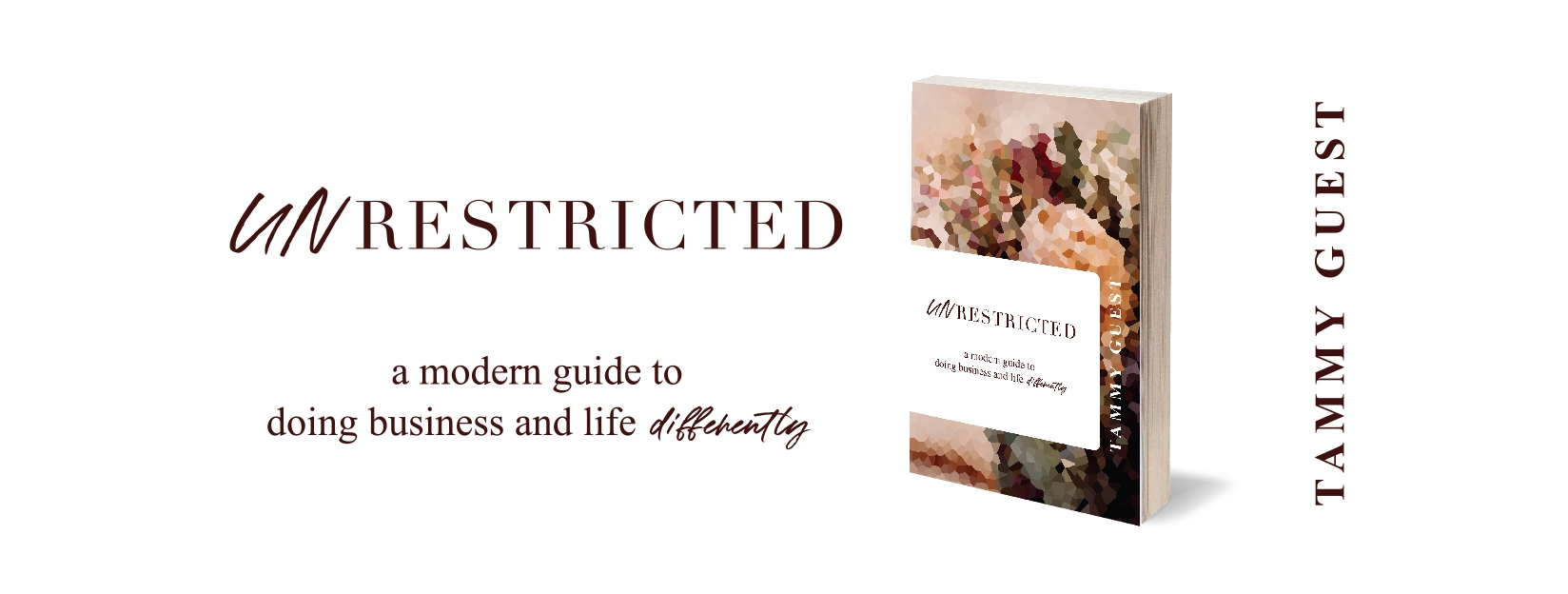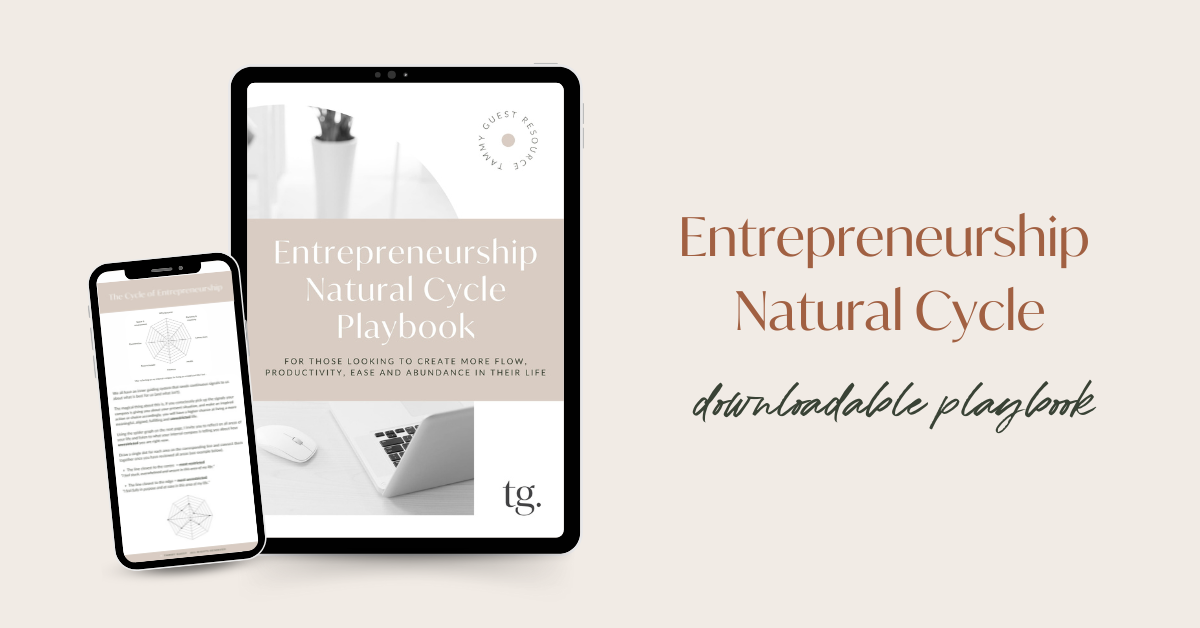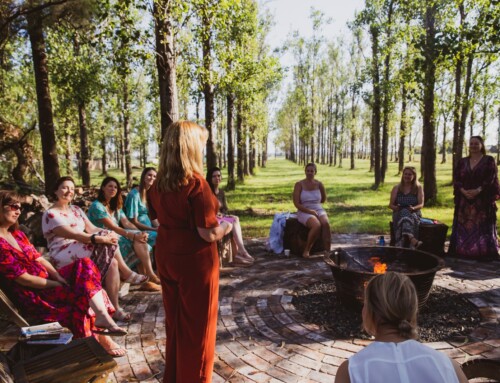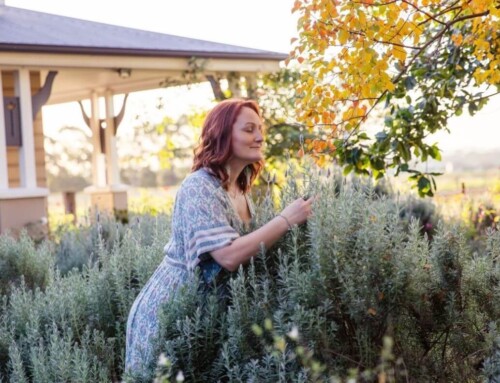10 tips to fill and run a successful retreat locally and internationally.
I want to share with you all about how to run a successful retreat. I’ve run over 15 retreats here and overseas, so I feel like I’ve got a good idea on how to do it successfully.
My retreats have hosted anywhere from 3-50 people. The number of attendees doesn’t really change anything logistically, but there 10 tips you can’t do without if you want to get people on board, fill up the retreat, and make sure you haven’t missed anything. I don’t want you to get to the middle or the end of your retreat and wish you’d done things differently!
When I first started doing retreats back as a naturopath, I was burnt out. I was really, really tired of seeing one on one clients, I was seeing about 40 to 50 clients per week. And that amount of consultations really takes it out of you, especially on my big days. I used to have really long Thursdays where I would see up to 14-15 people in a day. I was trying to figure out a way I could do one-to-many that didn’t include a whole bunch of tech.
One of those was workshops. We used to fill out a workshop room but there wouldn’t be enough space. And I have a lot to say about things – so I was really keen to actually spread it out over a longer period.
I started with a day retreat at our clinic.
That was a whole day where we took some people on a little journey from what they did know to what they didn’t know. We put them through some really cool experiences, especially around:
- stress relief
- stress reduction
- different speakers
And gave them a full day of an urban retreat.
Later, I expanded out (I’m a bit of a go-all-in type of person). So that expanded out to our overseas retreats in different countries in Asia where we were able to create an immersive experience. I went and checked out a couple of places. Which is super cool when you’re running a business to get to go and do a reconnaissance mission somewhere you would like to run an event!
When I did my first five-day event overseas, it was amazing!
It was a whole new level of understanding and being able to give and be of service in a really deep way to the 8 people who came to that.
When I came back to Australia, I saw so many messages from people who said they didn’t want to go overseas. So I decided to run one here in Australia.
So I thought of places that inspire me because it was really easy for me to fill my overseas retreat because I was so inspired by it. You might freak out about something like that – but if you are also inspired by running something, go with the thing that brings you the most joy and that you’re most inspired by. Because you’re going to be the most motivated to do the work to fill it, even though it might feel icky, weird, or different.
My experience of running something that I wasn’t quite as inspired by was different. I ran a retreat here in the Hawkesbury River. It was a beautiful, magical building. Like a lovely stays kind of accommodation that you can get on Airbnb now.
It was a beautiful accommodation and I was expecting to get 10 people as I did for the overseas one but and I ended up only getting three. I ran it anyway. I highly suggest you do even if you don’t fill out your retreats if it’s at a break-even point. Running a retreat for an intimate group changes the dynamic and you can provide some really amazing one on one time. You can really provide individualised attention.
That’s in stark contrast to the 50 people I took to another overseas immersion. The difference in the logistics of herding people in and out of mini-buses, getting attendees to the experiential events we had outside of the resort, and things like that, was major. So it really changes.
But no matter how many people you get, they are humans who have put up their hand to spend time with you and take a deeper dive into their health and wellbeing, and their mindset around what they could change in their life to move them forward.
So don’t negate if you only get a few people. Those few will turn into a few more, which will turn into a few more. If this is your thing, and you’ve realised through experiencing it that this is your thing, then these top 10 tips will help you.
1. Pick A Date
You might think, “I should just plan what I’m going to do. What can I provide for these people? What gifts could I give them?”
No. It’s ‘pick a date.’
It is the simplest of things. But often when I’m mentoring other practitioners in this, this is the thing that you guys ignore. But it is the thing that’s most important.
You need to really seriously think about your ideal client, the person you’d love to have on the retreat. If they’re a:
- mum, they might not want to do the school holiday or they might want it over the school holidays because they’ve got back up to look after their kids.
- business person and you might not meet the criteria or they might need it a different time of year.
So you really have to pick a date. That’s number one. You can’t get a decent quote from the places that you’re considering or check on availability for the place that you’d like to run your immersive retreat unless you have a date. So it’s really, really important.
The first thing before anything else – pick a date.
As soon as you have that beautiful spark inspiring you to hold the retreat, hold onto that spark and pick a date. It’s the most important thing.
2. Pick A Venue
Obviously, if you’re going to pick a date, you have to find out whether or not the place is available. I’ve done this before where I was running a workshop. I was thinking, “I’m going to just run it there. This date will work for everybody.”
And then the place wasn’t available. So I had to go out to all the people who ended up booking and tell them it was going to be at a different venue. Otherwise, you’re going to have to change the date.
So it’s very important to 1) pick a date, and 2) pick a venue.
Pick a venue that gives the right vibe.
When you’re picking a venue, definitely go for the one that will give you the vibe that you’re looking for. The thing about an experience that you’re living through with a group of other people is they’re not going to remember what you said to them. Even though you think that’s the most important thing. You think the most important thing is to share with them all of your amazing knowledge about stress relief, or being a goddess, or looking after their hormones. They’re not going to remember that stuff.
What they’re going to remember is the way you made them feel, the way that they felt as a result of the environment you created. And as a result of the experience you created.
So choose the venue that matches the experience that you want to have, not the other way around. Not I can only afford X, Y, Z. Choose it because they have the experience you’re creating.
We’ve seen some recent conferences for natural health practitioners recently. We saw the Root and Branch Festival – that looked amazing! That environment was perfect for the herbal community and the growth, and the yumminess that was happening there. I’ve seen some extraordinary events recently with glamping, and I’ve seen some high-end, fancy, doo-da ones!
Whatever matches the particular vibe that you’re creating for your tribe, go with that and don’t skimp on it.
3. Envision The Number Of People You’d Like To Have There
Three is to envision how many people you’re going to get there. Because, again, you can’t get a quote from a particular place, if you’re doing an Airbnb accommodation or that kind of thing, you need to know how many beds you’re going to have. You need to know whether people are going to be twin sharing or if they’re going to be single. How many availabilities do you have for that particular experience?
So, when it comes to envisioning how many people, my suggestion is to go a little woo-woo on it. Close your eyes and think about standing in front of these people and sharing your wisdom and knowledge.
How many people do you see? How many people do you really feel you’d be able to hold space for?
This is a really interesting aspect of creating and facilitating a group. The group dynamics include:
- being held in an energetic space, in a room
- how people are going to interact
- whether or not they’re going to like or feel challenged by the environment you’re creating
How that’s all going to work depends on how many people you’ve got there. So you have to have a fairly clear number in mind of how many you think you can hold space for, and then give or take a certain amount.
In this way, you are able to not only hold a vision for it, but you’re engaging your reticular activating system. That part of your brain that’s looking for patterns will look around and go, “Oh, there’s six people. There’s three people. There’s this lady and her friend, she’ll come on board.” Your brain will start to find ways to connect you with that amount of people to come to your retreat. So holding a vision for it is really important.
Then – getting really woo-woo on it – start sending yourself messages on your phone or setting your password to however many people you’re going to serve on your retreat. For instance:
- 10fortheGC = 10 for the Gold Coast
Set that as your password and all of a sudden, you’re being reminded all of the time about these people that you’re essentially sending out vibes to, to come on your retreats. Envision how many people you’re going to have.
4. Envision the Journey You Want To Take Attendees On
Next, you need to envision the journey or the experience you’re creating. This is really important when it comes to, again, finding a quote.
Because whatever you’re doing for the place, whether it’s:
- at a resort
- hiring a space like an Airbnb and having it catered
- borrowing a place from your friend
- creating a glamping experience
You still need to have an idea of the numbers for:
- how many people
- the dates
- expenditure for accommodations
- cost of catering
And those can vary in a huge way. Sure, you can create your own catering, but it’s still going to cost you time, money, effort, and the cost of the shopping list. So think about what experience you would like to create for them.
What is the journey you want to give them?
Where do they start? Are they really burnt out as a:
- mom
- somebody who’s gone through multiple IVF rounds
- business owner
- someone who has been from doctor to doctor to figure out their thyroid condition
Whatever it happens to be in who you serve, think about how they come into it. Then think about how you’d love them to leave. What do you want them to feel when they come to the end of your day retreat, your long weekend, or your week-long experience with them? How would you like them to leave?
How would you love them to feel at the end:
- energised?
- empowered?
- knowledgeable?
- confident?
Think about those words and then think about the journey you want to see them taking from that first day where they feel understood for where they’re at, heard, and connected to all the other people in the group. Then maybe the middle of the the the journey that you take them on via the day, a long weekend or a week. How do you want them to feel in the middle?
For example, if you’re a natural therapist or do some kind of energetic healing, do you want them to have a bit of a breakdown in the middle, where it’s really getting into a space of shifting something deep? Then coming through and having a breakthrough at the end?
Or do you want them to just slowly get more and more excited, more motivated, more whatever it happens to be?
Where do you want to take them and what do you want them to experience along the way?
What little tidbits can you teach them? What little moments can you gift them when it comes to creating space for them to journal or bringing in other practitioners?
I’ve seen some of my mentees who have brought in:
- drumming circles
- flower crowns
- nutritionists or mix practitioners to be able to create different foods
- food experience
- medicine experience
- massage
What could you bring in that gives them the space to start to heal and feel the way you want them to feel at the end?
When you’re trying to figure out how much these things are going to cost you have to have thought about what these experiences are going to be and what other practitioners are going to bring in.
On every second day of my retreats, we always go on a cultural experience. We do something that’s local, possibly giving back, understanding the environment or the culture that we’re visiting, and something to do with reconnecting with yourself. So we often have yoga, massages, and other things. And that also has to be factored into the cost.
So make sure you’ve got all of those other experiences and the journey you’d like to take them on in your mind and envisaged is really important.
5. Create The Sales Page & Take A Deposit
Because once you’ve picked the date, picked the venue, envisioned how many people are going to be there, and envisioned the journey you’re going to take them on, you’ve got all the important elements for creating your sales page.
Before you even think about all the logistics and all the other things, you have to create the sales page.
Sometimes even before you’ve sold a ticket, you have to create the sales page. Or before you’ve booked an event space because the first sale will actually be the deposit for the event space that you’re going to be holding the retreat in.
So creating a sales page is hugely important. A sales page is one page on your website or somewhere else. Some of us use LeadPages or landing pages. MailChimp now has a landing page that you can fill out.
You’re creating a page that the only button on that page is for them to book in or leave a deposit. So on that page, we can put all of this amazing content you’ve been thinking about:
- experiences they’re going to have
- benefits they’re going to get
- how they might feel at the beginning and at the end.
- an intimate retreat
- full of the most incredible tribe
- a huge event
Whatever it is that you’re creating in your mind, you have to put that on the sales page. So that whenever anybody asks, you have somewhere to send them for all the information that they need.
Include a deposit button.
And there has to be a button there to register interest, but I highly suggest you take a deposit. Because it’s not until somebody gives you the money, until they put the money where their mouth is, that it’s real. There are always a lot of people who will say, “Yes, I want to come,” – and then nothing.
I’ve experienced this and I have so many practitioners who run their retreat and they forget to ask, or they feel funny about asking, or they’re not quite sure how to take that first deposit. They don’t know how to get the money because it’s such a big investment in somebody else to come on a retreat.
But that bit is the most important. I’ve seen so many be so disappointed because everybody said, “Yes, I want to come,” but nobody actually put the money down. So more than anything you need a deposit button and the quickest, easiest thing is to pop a PayPal link up there.
Make sure that they put their money down so that their position at the retreat is paid for. And that money on the back end is actually used to deposit for your event space. Or your catering or anything else – any of the other things that we were just discussing around the journey.
So really, really important that part of it. Don’t skip that bit. Even if you feel icky about it, it’s really important to get the money.
Get the money. Because otherwise you literally can’t create the event.
Also, put some really good pictures on the sales page. If you’re going on a retreat, you want to envisage what you’re going to be experiencing on the retreat.
Even if you’ve never run a retreat before and don’t have any pictures of you running your retreat, at least put a picture up of where the event’s going to be. Get your clients envisaging being and feeling the way that they want to feel, in that space.
6. Get Your First Sale (Mine Your Network, Invite Your Ideal Attendees)
There should be plenty of people on your email list. There should be plenty of people that you know and think about when you’re creating this event that you would love to have on the retreat. It’s really, really important to invite them.
To get your first sale, mine your network and invite them.
The first thing you do to get the first sale is to invite them.
It might be in your:
- friendship circle
- old work network
But let people know that you’re running this event, that you’re putting it together, what do they think, and would they love to come? Share your vision for it.
That first sale is the thing that actually cements that it’s actually going to happen.
So more importantly than anything else, invite people to it.
Imposter syndrome will come in. I promise you, it will come in. It will sneak over your shoulder and go, “Who are you to run this? People might think. . . ”
But the reason that you’re creating this in the first place is to create a beautiful, yummy environment that you probably wanted. And that you know is going to be beneficial to somebody.
If you don’t invite them to it, it’s robbing them of the experience of possibly healing in a way that they would be really receptive to. And possibly having an amazing experience with you that they can’t find anywhere else. They’ve probably been waiting for you to do it anyway.
So invite them along.
Whoever it is that comes to mind that you think, “She would probably really loves this. He and his wife would probably really like.” Actually invite them.
It’s a beautiful experience to get an email like that. “I’ve created this event and I really think, given what I know about you and your circumstances, it’d be an amazing experience to take your health to the next level.” And invite them to come along.
Worst case scenario is that they say no. But at least you’ve got it out there and created an offer for them to make sure that they know that there is a possibility for healing and feeling a bit better in a retreat space, rather than seeing you one on one all the time. S
7. Create A Run Sheet Of What Will Happen During The Retreat
Structure enables flexibility.
One of the big mistakes I see from a lot of practitioners is that they want to create a retreat, they’re really excited about it, and they just go with the flow and see what happens. I also see people planning every last minute and leaving no space for anybody to integrate, have some time out, and actually enjoy the retreat. I see both ends of the spectrum.
But you really do need a structure especially if you’re booking with a resort or a bigger hotel or accommodation.
Create a run sheet
Whatever you’re doing, it’s really important to create a run sheet.
Essentially, it’s just a little spreadsheet that tells you from the beginning of each day to the end:
- what’s happening
- where it will be
- and a general idea of how much time it takes to actually get through the content that you’d like to share
Oh, my first retreat! Holy moly. My background is in science, so I love just opening up information on people.
Back in the day, oh my goodness, it was like going to school. It wasn’t like going to retreat at all! I was like:
- first, we’re going to share about getting to know one another.
- then we’re going to share about gut health
- next we’re going to do stress
- then we’re going to do hormones
- and then hours and hours worth of content!
Don’t fill every last moment
Whether people who are coming away on either a one-day urban retreat, of a full week away with you to partly have a holiday and partly heal. So there has to be a holiday element to what you’re creating. A stress relief element that they wouldn’t have created for themselves. So don’t fill every last moment.
The other thing is, when you have a group dynamic, it’s very different from a one-on-one dynamic. People talk to one another. They want to get to know everybody in the room in a way that you probably haven’t gauged the time for. So it’s really important to have a spacious schedule. But you do have to have a schedule planned out. One that gives them a little bit of time to actually integrate the work that you’re doing.
Structure enables flexibility.
Once you have that schedule, you can literally throw it out the window. When you’re in there with the people, noticing what’s going on, facilitating the energy in the room, and facilitating the conversation (that’s a whole other training).
But the most important thing is to create some form of a structure. Let your venue know about the structure and tell your catering about the structure. Tell whoever needs to know about the timing of those events. Make sure that they have an awareness of it.
If you have an awareness about it, you can understand what you can go with, what can be extended, and what you need to shorten.
8. Nourish Yourself & Your Attendees
(don’t skimp on the food, air, space, time)
It’s really easy to over-deliver because we’re all nurturers and carers, in our profession. We love, love, love, give, give, give, give, give.
But it’s a whole other thing for you to be on for anywhere up to seven days. Being on means that you do have to nourish yourself with air, with water, with food. Don’t skimp on the food. We’re all practitioners. The vast majority of us are foodies or we have a food appreciation, particularly for food as medicine.
One of the biggest things you’ll be remembered for is creating a beautiful, nourishing menu. Don’t skimp on the food when you’re talking to the catering. Make sure that you cater yourself in, not just your attendees. And make sure that you are nourishing yourself.
Whenever you’re offering:
- yoga
- massages
- other practitioners
Make sure you’re nourishing yourself, too.
If there’s anyone else facilitating with you, take some time out for yourself that you can rejuvenate and can actually be on and be present for those people who are there. S
Don’t forget to nourish yourself while you’re nourishing everyone else. Too many times I’ve seen practitioners get to the end of running their retreat, and they go into the biggest, deepest, darkest poo pit because they haven’t looked after their adrenals. There was this big build-up to the retreat, then they run the retreat, and then their adrenals take a dive.
9. Leverage with Photos, Videos, Testimonials
This is the bit that a lot of praccies forget.
You’ve set up the retreat, you do all the things, you run the retreat – then the retreat’s over. And then you have to do the whole thing over again to create another retreat (if you actually love the retreat. Some of you know that it’s not your thing and that’s totally cool. But you should definitely give it a go at least once if you’ve got that little spark).
Leveraging is really important and it looks like this.
You can put a certain amount of effort in and you get a certain result. If you leverage, you put a certain amount of effort in and you get a much bigger result. If we go from one place and get a little result, we can leverage and get a bigger result.
How can you take the time, energy, effort, and money that it’s taken to create a retreat and later on, create more from that? Rather than just running one event and then running another.
One of the quickest, easiest ways is to get photos or video. It becomes easier – leverageable – to sell your next retreat. Easier to get people interested and motivated in your next retreat.
At a minimum, get photos and testimonials.
Get feedback on how to change and shift for next time. What worked, what didn’t work, what can be done better. Anyone who’s saying they had an amazing experience at this particular event, ask them if it would be okay to use it this on your website.
These types of things are really, really important if you’re running a retreat and you want to leverage it moving forward.
Video footage is one of the most extraordinary ones because it gets shared more than anything. And it’s able to really get the look, feel, and the vibe better than anything else. If you’ve got a chance of getting a videographer in for part of it, then you have a better chance of easily selling your next event.
10. Show Up, Be Your Best Self, Be Present
This goes back to when I ran my second retreat, I only had three people. I only had two people right up until about two weeks before it and then I got a third person.
I learned that running a retreat for three people was just as much as a gift for me, as it was for them, as it was when I ran one for 50 people.
The experience and the depth of the conversations. The attention I could give to those people was profound and an amazing gift. They showed up at the right time, for the right reasons in their life, to say yes, I’m ready for a change. So how dare I not show up for that? Even though there were only three people and I thought I should have like a million.
When the retreat turns out different from what you expected, it’s turned out that way for a reason.
Show up, have fun anyway, and then learn the lessons on the back end of it. It’s really, really important to show up, no matter what’s happening. No matter if someone’s complaining, someone hasn’t got there on time, or if just the most amazing experience and all you want to do is cry because it was just the most incredible thing.
At either end of the spectrum, show up with with the best that you can in that moment. Give the best that you can for the vision you had for it and the vision you continue to hold. Help them get from where they are beginning to where they are moving to.
Show up and have fun.
The reason you probably created this event in the first place was to change it up a little bit. Because you weren’t having as much fun one on one, as much fun filling your books, or selling your other programmes or courses. You wanted to change it up a bit. So you may as well have fun in it.
I just love retreats, I feel so in my element. When I’m running retreat, I feel like I’m flying. Flow just happens even if people are cancelling at the last minute.
Some really interesting challenges happen for people to get themselves on a retreat. And even if all of that happens, I know the right things are happening for the right reasons at the right time for everybody to get what they get out of it.
It’s an extraordinary moment in anyone’s lifetime if they put their hand up to say, “Yes, I’m this important for this amount of time to take care of myself and I trust you to take care of me in this particular environment for this particular time.” I feel so, so much gratitude.
It feels like such a gift to be able to do what I do for people when I’m running retreats, immersions, or events.
Recap
I would love for you to experience this if you’ve got that little spark inside you! If you do, here are the 10 tips to remember:
-
Pick a date
-
Pick a venue
-
Envision the number of people you’d like to have
-
Envision the journey you will take attendees on
-
Create the sales page & take a deposit
-
Get your first sale (mine your network, invite your ideal attendees)
-
Create a run sheet
-
Nourish yourself & your attendees (don’t skimp on the food, air, space, time)
-
Leverage with photos, videos, & testimonials
-
Show up, be your best self, be present
Take Action
Now, I’m not saying this is for everybody. But if you do have that little spark inside you and you do want to run a retreat, I hope these 10 tips have helped you to kind of reframe and reorder the most important things that you need to run a successful retreat.
Hopefully, everyone has got something out of this. If you did get something out of it and you’re thinking, “Hmm, that’s on my radar for 2020!” Go and pick a date! Remember that’s number one. Pick a date, manifest it, see what happens.
I would love to see all of these amazing events come to life. Because you’re here for a purpose and those people are out there waiting for you to show up in this way for them. It’s already happening! It’s just a matter of the timing.
If you do get something out of this, please do share it to anybody else who’s been thinking about doing a retreat or join us in the Natupreneur Hub for more videos and free training!










Hi Tammy, I am toying with the idea of a retreat. I actually was fated across your site. I have still yet to read it, in complete detail but I have taken a good look. I think it is great! a very user friendly guide, especially for a novist like me. So thank you! Wishing you much more success.
Hi, for me the retreat part is easy, what is not easy is the insurance side, which you have not mentioned. Do you have insurance for your retreats? If so, how do you go about it?
Yes I go through an insurance broker. It is one of the most expensive parts of my business every year but essential